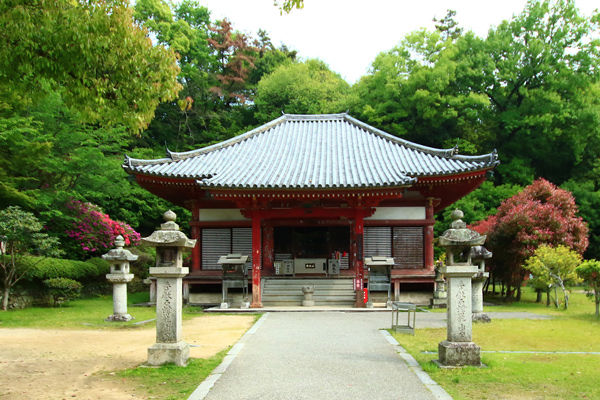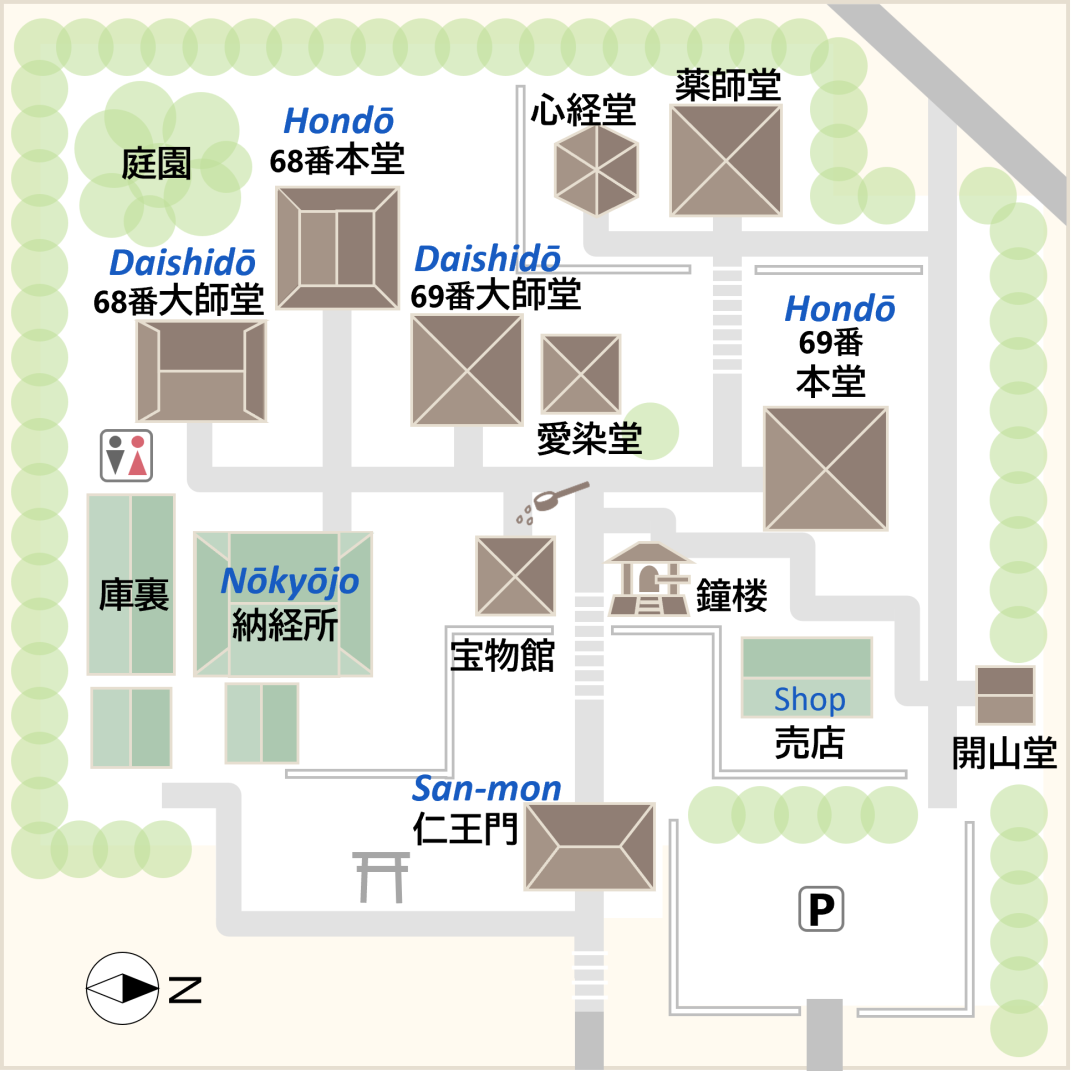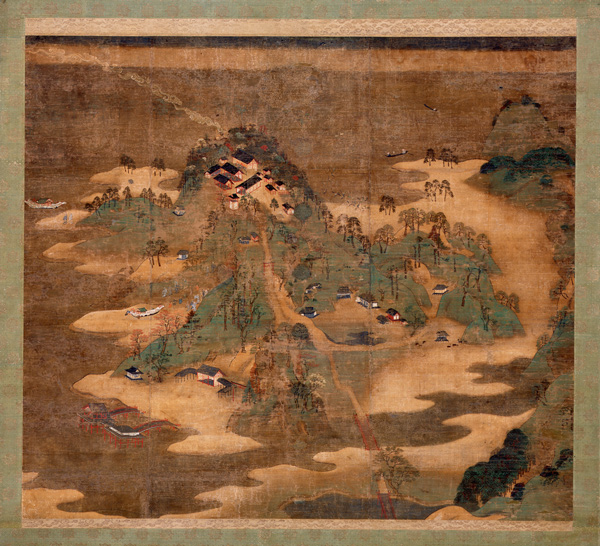The Shikoku Pilgrimage Temple Guide
Temple 69, Kannonji

Precinct map

History of the temple
Kannonji is located on the same grounds as Temple 68, Jinnein. They also share the same founder, foundation date, and history. When Kannonji was founded, it was part of the same temple as Jinnein, called Jingūji Hōkōin. It was built as a branch of the Kotohiki Hachiman Shrine.
In 807, when Kobo Daishi dedicated a statue of Amida Nyorai (Buddha of Limitless Light and Life) to Kotohiki Hachiman Shrine, he became the seventh head priest of Jingūji Hōkōin. Then, following the example of Kofukuji Temple in Nara, Kobo Daishi built seven major temple buildings on the side of Mt. Kotohiki, including a Chukondo, a Tokondo, and a Saikondo. He also carved a statue of Sho Kannon Bosatsu (The Bodhisattva Who Hears the Sounds of the World) as the principal image and enshrined it in the Kondo. He also put seven treasures in the pagoda, including lapis lazuli, coral, and agate. He separated the temple complex from Jingūji Hōkōin and named it Shippōzan Kannonji (Seven Treasures Mountain Kannonji) and designated the temple as part of the Shikoku Pilgrimage. He also renamed Jingūji Hōkōin as Jinnein.
Kannonji flourished, becoming an imperial temple for Emperor Kammu (reigned 781-806) and three other emperors. During the Muromachi period (1336-1573), a high priest named Doson Taisei Daisojo, a son of Ashikaga Takauji, served as the chief priest for 45 years. In Meiji period, Jinnein was separated from Kotohiki Hachiman Shrine under the the new Meiji government's edicts separating Shinto and Buddhism, and it moved to the grounds of Kannonji. This resulted in two pilgrimage temples existing within one temple precinct, the only such pair on the Shikoku Pilgrimage.
The Hondo is also called the Kondo. It was originally built in the Muromachi period (1333-1573). It is designated as a National Important Cultural Property and is decorated with colorful vermilion-lacquered pillars. There is a museum of treasures in the precincts of the temple. It houses a number of Nationally Important Cultural Properties including a rare sculpture of a reclining Buddha which is housed in a case from the Heian-Kamakura period. It also displays some famous paintings, Kotohikigu-E Engi (painted on silk, Kamakura period), Fudo Niddoshi Zo (painted on silk, Muromachi period), and a statue that was in the Kotohiki Hachimangu Shrine.
Highlights
Kotohikigu-E Engi
This Yamato-E painting depicts the origin of Kotohiki Hachimangu Shrine as founded by Nissho Shonin. It shows the shrine building near the peak of the mountain in the center of the painting.
Oldest graffiti
The Hondo, with inscriptions such as "Choshu Shimozumasho...1347...," is considered a valuable source of information about pilgrimage culture.

Details
Names: Shippōzan, Kannonji
Denomination: Shingon sect, Daikakuji school
Principal Image: Sho Kanzeon Bosatsu
Founder: Nissho Shonin
Founded: 703
Access
Address: 1-2-7, Hachiman-cho, Kan'onji City, Kagawa, 768-0061
Phone: 0875-25-3871
Parking: Yes
Lodging: None
Official website: http://www.shikoku88-6869.com/
facebook:四国霊場第68番・69番札所 七宝山 神恵院
